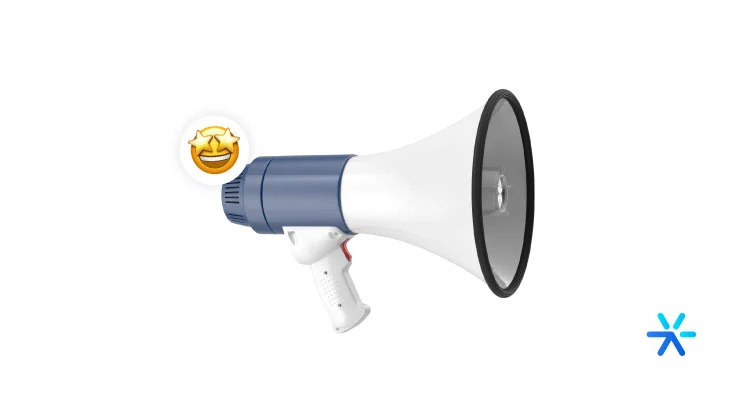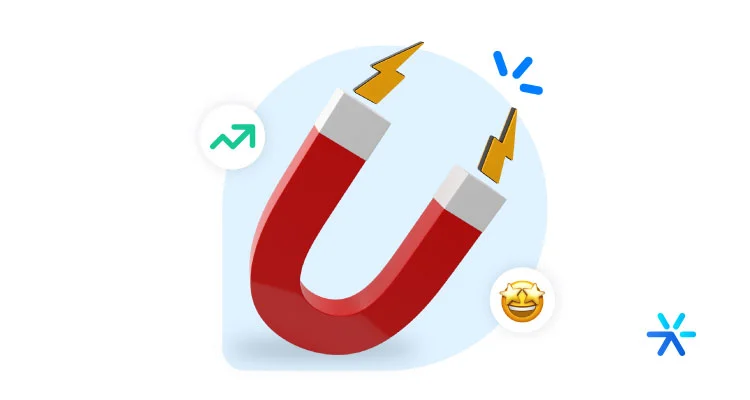What is Sales Prospecting and What are the Methods for Prospecting Clients
Client prospecting is what drives the sales sector.
Without new contacts for commercial outreach, the number of sales becomes very limited to those consumers who actively seek the company to close a deal.
Do you need to improve your way of prospecting clients?
Then you are on the right page!
In this article, we will talk about this stage of the sales flow, who the ideal clients are for each niche, and tips to make your prospecting more powerful.
Keep reading.
What is Client Prospecting?

Within the sales processes, there are several stages leading up to the moment of purchase or contract closure. Client prospecting is one of them.
This stage of prospecting involves searching for, identifying, and building relationships with consumers who match the ideal client profile and may become clients of the company.
Who is the Ideal Client?
The ICP, Ideal Customer Profile, represents, as the name suggests, the ideal client for the company.
This means that the profile must match the person who would be served by the solutions offered by the brand—someone who will buy your product or service.
Leads vs. Prospects
When your company gains a contact or personal information from a consumer, such as a name, email, or phone number, you call them a lead, and these leads form the contact base, the company’s database.
Interested in something your brand offers—and it’s not always the product or service—this consumer provides this data as a form of exchange.
Prospects, on the other hand, are contacts or leads who have already shown direct interest in the product or service offered (such as through a demo hook or free trial conversion) or have met the qualification criteria defined by your brand.
Therefore, prospects are more qualified leads for commercial outreach and sales.
Why is Client Prospecting Important?
Prospecting clients is essential for the success of the sales process and the business, as it reaches the right people at the right times, qualifies contacts, directs where teams should dedicate time and effort, accelerates the sales cycle, and generates business opportunities.
What are the Stages of Client Prospecting?

As mentioned, client prospecting is a stage of the sales funnel.
Within it, there are several stages fulfilled by the department and sales representatives.
1. Research
In the first phase, the responsible teams must locate potential consumers.
Additionally, they should gather as much information as possible about each consumer’s challenges and ambitions to better prepare the representatives who will later make contact.
The research phase also helps to define the best-qualified leads, which the sales team should prioritize.
2. Prospecting
The first contact is then made by the representative on behalf of the potential buyer.
The salesperson must be able to create space to present what the company offers, focusing on the consumer’s needs and opportunities.
This is just the beginning of the conversation.
3. Connection
It’s common to need to contact people who influence the buying decision, with whom salespeople need to speak before reaching the decision-makers.
This happens mainly in the B2B market during the connection stage.
4. Education
A salesperson’s work needs to be constant and persistent.
A sale doesn’t always close on the first commercial approach.
Sometimes, several contacts are needed, especially for larger contracts, to show the full potential of the offered solution, clear possible doubts, and stimulate the interest of the potential buyer.
Depending on the type of product or service, samples or demonstrations may be offered, along with a quote if the lead is open to it.
5. Closing
The closing is the final stage of prospecting, where contacts turn into real business opportunities and, finally, clients of the brand.
It’s important for the sales representative to know the right time to offer this closing and, even after it happens, stay close to assist the consumer and strengthen the relationship to encourage repeat purchases.
20 Closing Sales Techniques to Make Deals Like a Pro

What are the Ways to Prospect Clients?

There are several ways, alternatives, and channels for client prospecting.
Here are the main ones:
Outbound
The outbound version is the most traditional in the commercial process, where sales representatives actively seek new contacts.
This method is more costly, recommended for companies with a high sales volume.
That’s because, many times, to reach a qualified lead, the salesperson needs to go through many contacts who are not interested.
Solutions like cold calls, telemarketing, emails, approaches at events, and social media are part of this method…
Additionally, materials like flyers, direct mail, and presentations also fall into the outbound strategy as sales support.
🔎 You might like: 10 B2B Prospecting Strategies from Top Companies.
Inbound
The goal of the Inbound method is to attract visitors and generate leads through the offering of content, and then build relationships, nurture, and qualify these leads, guiding them through the sales funnel.
The brand acts as a problem solver until it identifies those qualified leads or opportunities that can generate sales, then passing these contacts, who are more likely to close a deal and show greater interest in the offered solution, to the sales team to take action.
Channels
The channel method is when customer prospecting uses third parties for this commercial approach.
Some examples in this scenario are affiliate marketing or service companies that outsource part of the solutions offered.
Thus, many times the company making the sale is not the same company that provides the product or service.
Referral
Referrals are also a way to prospect customers.
They occur when satisfied consumers recommend your brand to friends, colleagues, and other companies, in the case of the B2B market.
This also includes solutions like referral programs, which increase the volume of new contacts by offering consumers some benefit for their referrals.
Mixed
The mixed method, as you can imagine from the name, is one that uses solutions from more than one of the options mentioned here for customer prospecting.
When well-constructed, this mixed option can boost lead generation and sales.
Check out: 8 New Sales Channels for You to Test in 2022.
Best Tools for Prospecting Clients?

Check out 8 essential tips for customer prospecting:
1. Be Patient and Don’t Expect Quick Results
Prospecting is a laborious process that requires time and effort.
You will face many “no’s,” but don’t let that discourage you.
Work with realistic expectations and understand that closing a deal requires persistence and time.
2. Don’t Write Very Long Emails
Be concise in your email communications—your prospects’ time is limited.
Additionally, try to personalize your messages as much as possible so that leads understand you genuinely recognize their challenges and needs.
3. Be Broad Instead of Deep
Use a communication approach that covers problems and solutions but avoid delving too deeply into specific points, especially in the initial interactions.
Overloading your communication will only make it tiresome.
4. Don’t Give up too Quickly on Customers With an Ideal Profile
Sales objections will come up, even from consumers with the ideal profile to become clients.
Learn to handle these objections, don’t take the first “no” as a final answer, and understand what’s stopping the consumer from making a purchase.
Read also: Sales Objection Matrix: What it is and How to Build One
5. Know When to let go of Customers Without the Right Profile
On the other hand, if the objection is real, such as timing, budget, or if they’ve already made a purchase from a competitor, insisting is a mistake.
The same applies to leads that do not fit the purchasing profile: prospecting will only be a waste of your time.
6. Focus on Activity Metrics Instead of Processes
Commercial processes are important, but you shouldn’t analyze them subjectively.
Therefore, identify metrics tied to results and focus on tracking them for improvements.
Check out: Customer Acquisition Cost: What It Is and How to Reduce CAC
7. Maintain the Right Demeanor
The attitude of the sales representative greatly impacts the outcome of the approaches.
Always listen to the prospect, put yourself in the shoes of someone aiming to solve their problems, don’t be intrusive, and maintain a professional demeanor.
8. Always Establish the Next Step
Have in mind what the next step will be, no matter the outcome of the sales approach.
This way, you’ll be prepared to handle both a “yes” and a “no,” give more confidence to the consumer, and improve your sales pitch.
Best Tools for Prospecting Customers

There are several tools on the market that assist sales processes and workflows.
In the client prospecting stage, we highlight the following:
HubSpot CRM
HubSpot also has an automation platform with the same features mentioned for RD Station.
However, here we highlight HubSpot CRM, a free CRM option that lets you track the evolution of leads in the sales funnel, distribute contacts, schedule meetings, set reminders, and generate complete reports.
You might also be interested in: Sales Software: Best Options to Boost Your Business
MailChimp
If you’re looking for a simpler tool for email automation, MailChimp is a cost-effective solution with features that will facilitate this type of contact and relationship with your lead base.
LinkedIn is a very useful tool when prospecting clients.
You can use it to get in touch with the consumers you are interested in (especially in the B2B market) and also during the research phase to gather relevant information that your contact shares on this social network.
Google Alerts
Google Alerts, as the name suggests, is a tool designed to configure and receive notifications.
If you’re tracking a prospect, it can be useful to follow all mentions and citations made about them on the internet, especially if your prospect is a company or someone in a decision-making position within it.
Conclusion
Client prospecting is one of the key steps for the success of a company’s sales.
With the tips we’ve shared here, you’re now equipped to start or improve your strategies in this area.
And don’t forget to test Leadster today! It’s free for 14 days, no credit card required!








